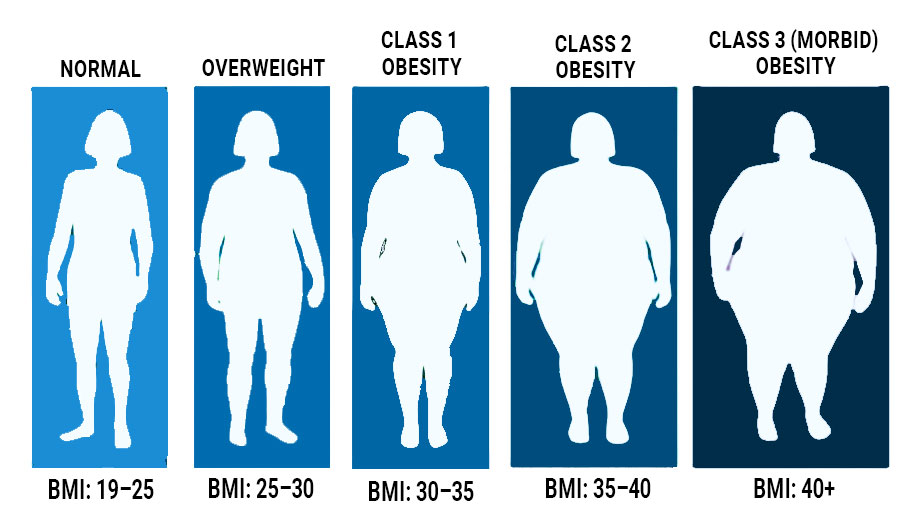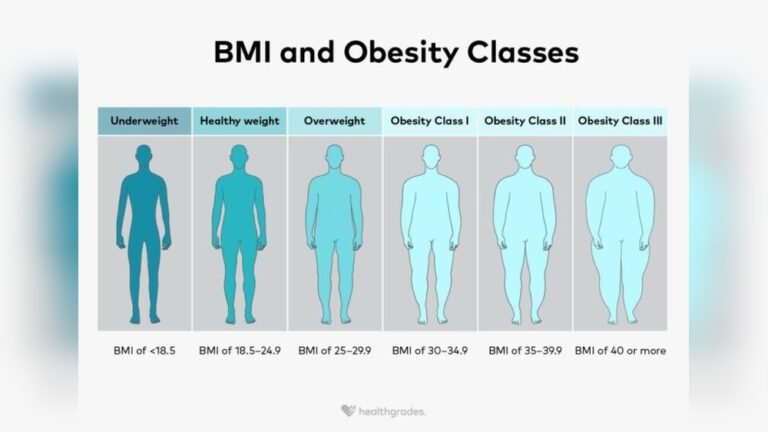Are you wondering what Obesity Class 1 means for your health and daily life? Understanding this term is important because it’s more than just a number on the scale—it reflects how your body weight might affect your well-being.
Obesity Class 1 is the mildest form of obesity, but it still raises your risk for several serious health problems like heart disease, sleep apnea, and joint pain. The good news? Knowing where you stand is the first step toward taking control.
You’ll discover what Obesity Class 1 means, the health risks involved, and practical steps you can take to improve your health starting today. Keep reading to learn how small changes can make a big difference for your future.
Obesity Class 1 Basics
Obesity Class 1 is the mildest form of obesity but still affects health. It increases the risk of heart disease, diabetes, and other problems. Understanding the basics helps you recognize the health impact and steps to take. This section explains the key facts about Obesity Class 1.
Bmi Range And Definition
Obesity Class 1 is defined by a Body Mass Index (BMI) between 30 and 34.9. BMI measures body fat based on height and weight. This range shows a higher risk of health issues than normal weight.
How Bmi Is Calculated
BMI is calculated by dividing weight in kilograms by height in meters squared. The formula is simple: BMI = weight (kg) ÷ height (m)². This number helps doctors assess if weight is healthy or not.
Difference From Other Obesity Classes
Obesity has different classes based on BMI numbers. Class 1 is the lowest range, while Class 2 is from 35 to 39.9. Class 3, or severe obesity, starts at a BMI of 40 and above. Higher classes mean greater health risks.
Health Risks Linked To Class 1
Class 1 obesity is the mildest form of obesity but carries health risks. Even a small increase in body fat can affect your overall health. This stage raises the chance of developing several serious medical conditions. Understanding these risks helps in managing and preventing complications early.
Cardiovascular Issues
Class 1 obesity increases the risk of heart disease. It raises blood pressure and cholesterol levels. These factors can lead to coronary artery disease and heart attacks. Stroke risk also grows with excess weight. Maintaining a healthy heart becomes harder as fat builds up.
Musculoskeletal Problems
Extra weight stresses bones and joints. This can cause osteoarthritis, especially in knees and hips. Many people experience chronic back pain. Movement and daily activities become painful. Over time, joint damage may worsen without proper care.
Respiratory Complications
Obesity affects breathing and lung function. Asthma symptoms often worsen with extra weight. Sleep apnea is common in people with Class 1 obesity. It causes interrupted breathing during sleep, leading to fatigue. Poor sleep affects overall health and daily energy.
Increased Cancer Risk
Class 1 obesity raises the chance of certain cancers. These include breast, colon, and gallbladder cancer. Fat tissue produces hormones that can promote cancer growth. Managing weight helps reduce this risk. Early detection and lifestyle changes are essential.
Causes And Contributing Factors
Obesity Class 1 develops due to several causes and factors. These causes affect how the body stores and burns fat. Understanding these factors helps manage and prevent obesity.
Metabolic Rate And Activity Levels
Metabolic rate controls how fast the body burns calories. A slow metabolism can cause weight gain. Low physical activity reduces calorie burning. Sitting for long hours adds to fat buildup. Regular exercise helps increase metabolism and control weight.
Diet And Lifestyle
Eating high-calorie foods leads to excess fat storage. Fast food, sugary drinks, and snacks raise calorie intake. Poor sleep and stress can increase hunger hormones. Skipping meals may cause overeating later. Healthy eating habits and balanced meals support weight control.
Genetic And Environmental Influences
Genes can affect body fat distribution and appetite. Some families have a higher risk of obesity. Environment includes access to healthy food and safe exercise places. Living in an area with many fast food outlets can increase risk. Social habits and culture also influence eating and activity.

Credit: www.wphna.org
Symptoms And Warning Signs
Recognizing the symptoms and warning signs of Obesity Class 1 is crucial for managing health effectively. This stage marks the mildest form of obesity but still poses significant risks. Early detection helps prevent further complications and supports timely intervention.
Physical Indicators
Obesity Class 1 is defined by a body mass index (BMI) of 30 to 34.9. Noticeable weight gain around the waist and hips occurs. Clothes may feel tighter, and energy levels might drop. Increased sweating and shortness of breath during light activities are common signs.
Early Health Complications
This obesity class can cause high blood pressure and elevated cholesterol. Some people may experience joint pain or stiffness, especially in the knees and lower back. Mild sleep apnea and breathing difficulties during rest can also appear. Early signs of insulin resistance may develop, raising diabetes risk.
When To Seek Medical Advice
Consult a doctor if physical discomfort or fatigue worsens. Sudden weight gain or difficulty breathing needs urgent attention. Regular check-ups can monitor blood sugar, blood pressure, and heart health. Early medical advice helps create a personalized plan for better health.
Managing And Treating Class 1 Obesity
Managing and treating Class 1 obesity requires a balanced approach. Small, consistent steps can lead to meaningful health improvements. The focus lies in lifestyle changes, supported by medical guidance when needed. Early action helps reduce risks linked to excess weight. Understanding treatment options empowers individuals to make informed choices.
Dietary Changes
Eating a healthy diet plays a key role in managing Class 1 obesity. Choose whole foods like fruits, vegetables, and lean proteins. Limit sugary drinks, processed foods, and high-fat items. Portion control helps reduce calorie intake without feeling deprived. Planning meals ahead prevents impulse eating and supports steady weight loss.
Exercise And Physical Activity
Regular exercise boosts metabolism and improves overall health. Aim for at least 150 minutes of moderate activity weekly. Walking, swimming, or cycling are good options. Strength training builds muscle, which burns more calories at rest. Staying active also enhances mood and energy levels, making it easier to maintain healthy habits.
Behavioral Therapy
Behavioral therapy helps change habits that contribute to weight gain. Techniques include goal setting, self-monitoring, and stress management. Working with a counselor or support group increases accountability. Therapy addresses emotional eating and builds skills to handle triggers. These strategies improve long-term success and prevent relapse.
Medical And Surgical Options
Some individuals may need medical treatments to manage Class 1 obesity. Prescription medications can assist with appetite control and metabolism. Surgery is usually considered if other methods fail and health risks are high. Procedures like gastric sleeve or bypass reduce stomach size to limit food intake. Always discuss options with a healthcare professional for personalized care.
Long-term Outlook
The long-term outlook for individuals with Obesity Class 1 involves managing health risks and maintaining well-being. This mildest form of obesity still increases the chance of developing serious health problems. Proper care and lifestyle changes can improve life quality and reduce complications.
Reducing Health Risks
Lowering weight by small amounts can significantly reduce health risks. It helps control blood pressure and blood sugar. Heart disease, stroke, and type 2 diabetes risks drop. Eating nutritious foods and staying active are key steps. Avoiding tobacco and limiting alcohol also protect health.
Importance Of Ongoing Monitoring
Regular check-ups with healthcare providers track weight and related conditions. Monitoring blood pressure, cholesterol, and glucose levels helps catch problems early. Adjusting treatment plans as needed supports better outcomes. Staying informed about body changes guides healthy decisions.
Role Of Support Systems
Support from family, friends, and health professionals encourages progress. Emotional help reduces stress that can lead to unhealthy habits. Joining groups or programs creates motivation and accountability. Sharing successes and challenges builds confidence and resilience.
Common Misconceptions
Many people have wrong ideas about Obesity Class 1. These misconceptions can cause confusion and fear. Clearing up these myths helps people understand this condition better.
Knowing the facts supports better health choices and reduces stigma. It also helps people get the right care and support.
Bmi Limitations
BMI, or Body Mass Index, is a simple number based on height and weight. It does not measure fat directly. Muscle mass, bone density, and body shape can affect BMI scores.
People with high muscle can have a high BMI but low body fat. BMI alone does not show the full health picture. Doctors use other tests for more details.
Obesity And Fitness
Obesity does not always mean someone is unhealthy or unfit. Many people with Obesity Class 1 stay active and strong. Fitness levels can vary greatly among individuals with similar BMI.
Exercise helps improve heart health, strength, and mood. It is possible to be fit and still have obesity.
Individual Health Variations
Health risks linked to Obesity Class 1 differ from person to person. Genetics, lifestyle, and other conditions play a role. Some people face more problems than others at the same weight.
Regular check-ups and personalized advice matter more than just numbers. Doctors look at many factors to assess health risks.
:max_bytes(150000):strip_icc()/VWH-AmeliaManley-ObesityClasses-4000x2700-ad36a3f6697546f5ac42f59bf5f9be6b.jpg)
Credit: www.verywellhealth.com

Credit: capitalsurgeons.com
Conclusion
Obesity Class 1 means your body weight is higher than normal. This level increases risks like heart disease and diabetes. Small changes in diet and exercise can improve health. Talking to a doctor helps create a clear plan. Early action can prevent more serious health problems.
Managing weight improves your quality of life. Stay active and eat balanced meals every day. Taking steps now supports a healthier future.



